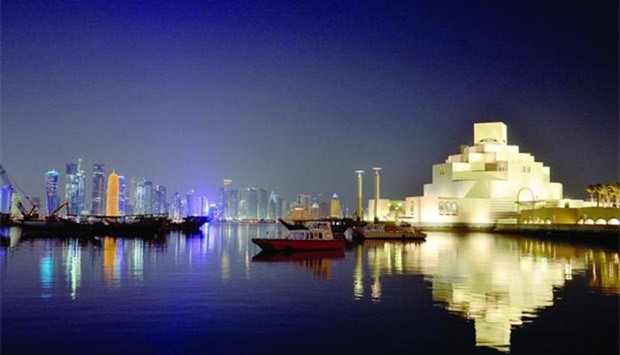So far this year the humidity has stayed fairly low in Doha. In June, there was only one day which had humidity of more than 67%, and that was on the last day of the month.
This was the first day that I stepped out of my house to go to work and was hit by the wall of humidity. My sunglasses immediately fogged up and I took a sharp intake of breath, as if my lungs were struggling to get enough oxygen out of the soupy air.
Unfortunately there are probably going to be quite a few more humid days to come, as this is the time of year when the amount of moisture in the air suddenly shoots up.
When I first arrived in Doha I thought it was really odd that a desert environment would have such stifling humidity. It doesn’t last too long though, and the majority of the year is so dry that the short burst of humidity doesn’t really have the chance to affect the environment.
If it were permanently humid, it’s likely that the sandy soil would absorb some of the moisture and Qatar would end up being greener than it is currently.
It’s only really for two months of the year that the humidity causes too much of a threat, and even then it seems to switch itself on and off; some days are far worse than others.
The level of humidity depends on the wind direction. If it is from the east, then it will draw in plenty of moisture from across the Gulf. If it is from any other direction, however, then the air will be dry.
As the weather at this time of year is incredibly hot, a lower humidity will definitely ensure things feel more bearable, but both high and low humidity come with their own health warnings.
For the majority of the year when the humidity is low, the air will try to draw moisture out of anything it can, including our bodies.
Our skin can become dry, and without moisturiser our lips and feet can easily become cracked; tears from our tear ducts can dry out, meaning our eyes can become dry and irritated; and our nostrils can also become dry, resulting in nosebleeds.
Low humidity also encourages the spread of the flu. Scientists have shown that dry air helps the virus to survive longer, whilst simultaneously increasing its ability to spread from one person to the next.
This is because dry air can dry out the mucus membrane lining our respiratory tract. This membrane normally filters out particles such as dust or bacteria, but if the air is too dry it can’t function properly and can become inflamed, ensuring our bodies are more susceptible to catching infections.
This all sounds very unpleasant, but as soon as the humidity soars a different set of problems themselves. Humid air is a breeding ground for all sorts of microscopic organisms that can harm our health.
Mildew and mould thrive when there is a lot of moisture in the air, and this is why some Doha residents find black mould growing on clothes and shoes in the back of their cupboards, or on other items which have remained undisturbed for a while. However, mould doesn’t just ruin possessions, it can make us very sick.
Generally it has been found that people who live in homes which have a problem with mould are ill more often than others, and some people have a particularly acute reaction. Sometimes an immune system has a particularly over enthusiastic response to mould, causing inflammation within the body and making people feel very unwell. This sometimes happens even if you can’t actually see the mould, because there is the chance it could be hiding in the vents or behind walls.
Humidity can also be hazardous to people who suffer from asthma or allergies. Dust mites love damp environments, and they are one of the most common triggers of an attack.
Exposure to the little devils can cause sneezing, a stuffy nose and itchy, sore eyes.
To avoid the negative effects of both dry air and damp air, we would ideally keep the humidity of our homes between 40 and 60%.
This is low enough to prevent dust mites and mould colonies from breeding, but high enough to prevent moisture being stripped from our bodies.
However, the only way to do this in Doha is to have both a humidifier and a dehumidifier, and if you had both of these throughout your homes, it would prove to be rather expensive.
Personally, I only pick a fight with the dry air as this is main problem during the majority of the year. Low humidity is also the easier issue to deal with, as even if you don’t have a humidifier, you can still increase the amount of moisture in the air by placing bowls of hot water around your home or boiling a large pot of water on the stove.
The humid weather is only with us between mid-July and mid-September, and for those two months I simply turn a blind eye. Other people who find mould growing in their apartments are forced to buy dehumidifiers to address the problem, but for me I simply take a break from filling the humidifier.

UNCOMFORTABLE: Nights between mid-July and mid-September can especially get extremely humid. Photo Still Epsilon/Wikipedia


